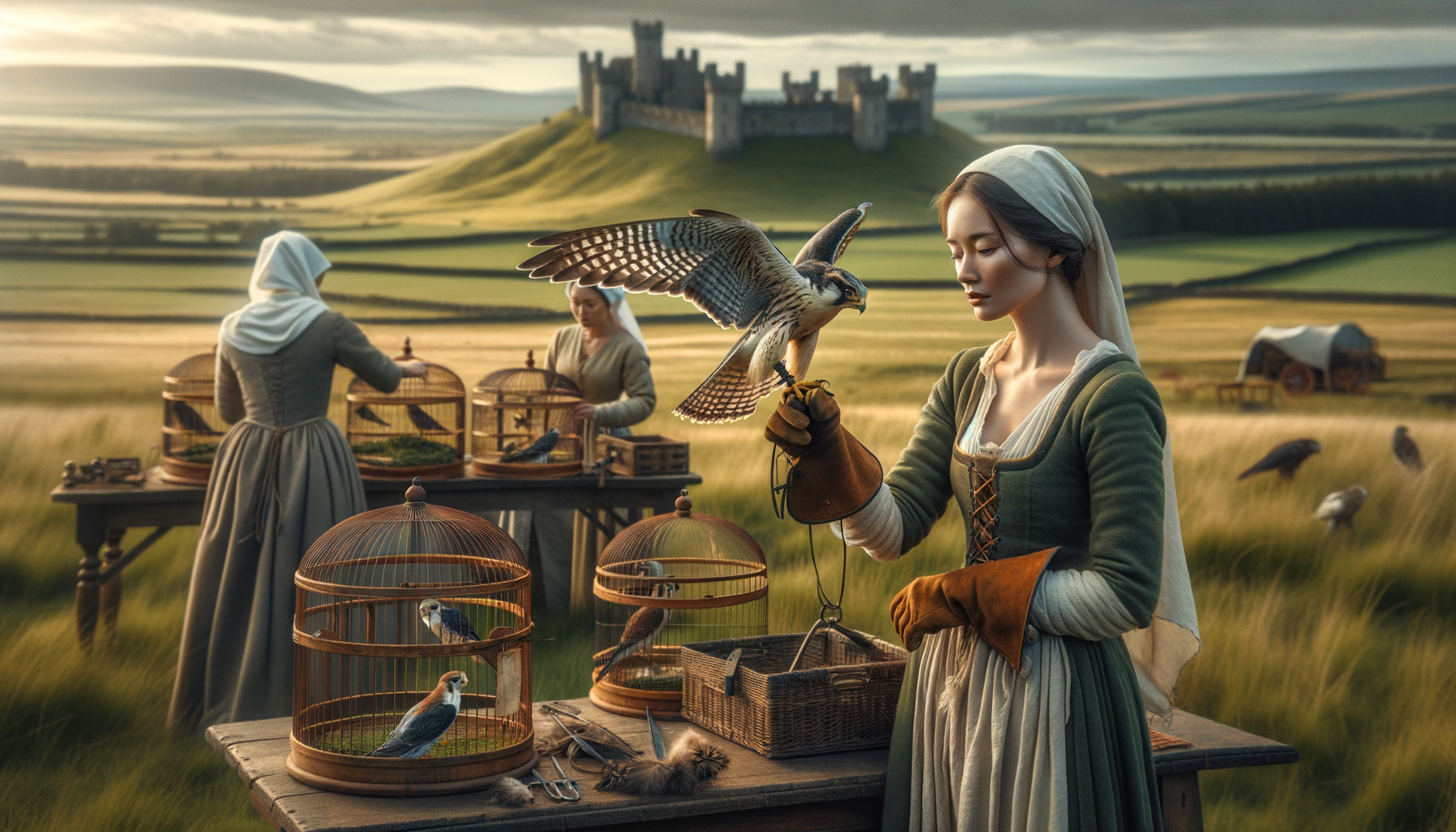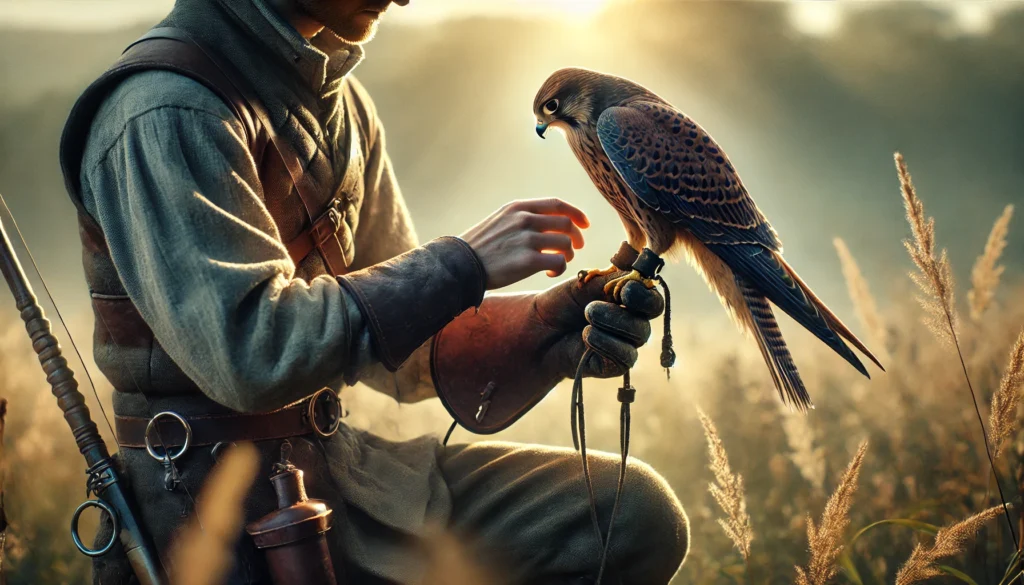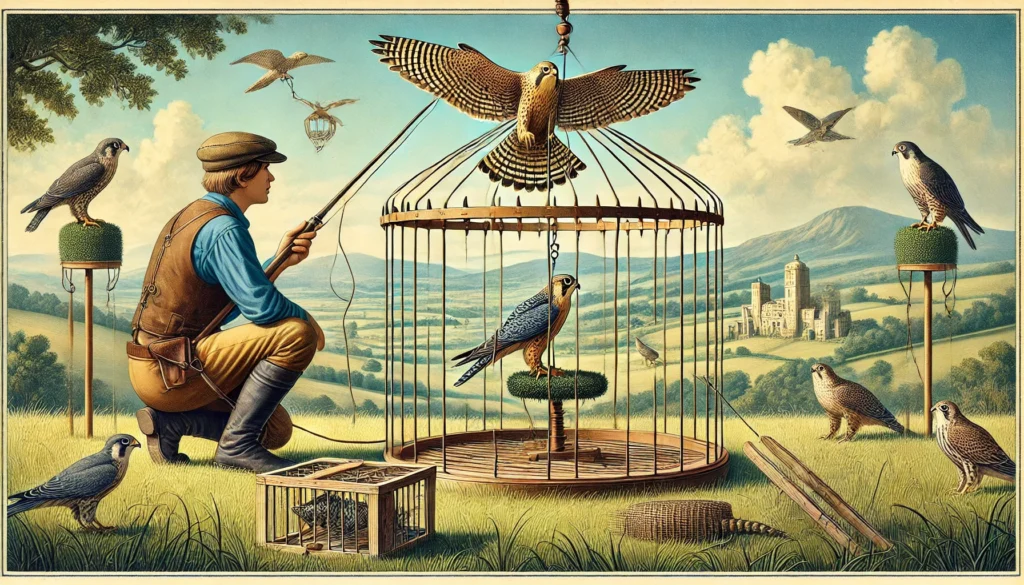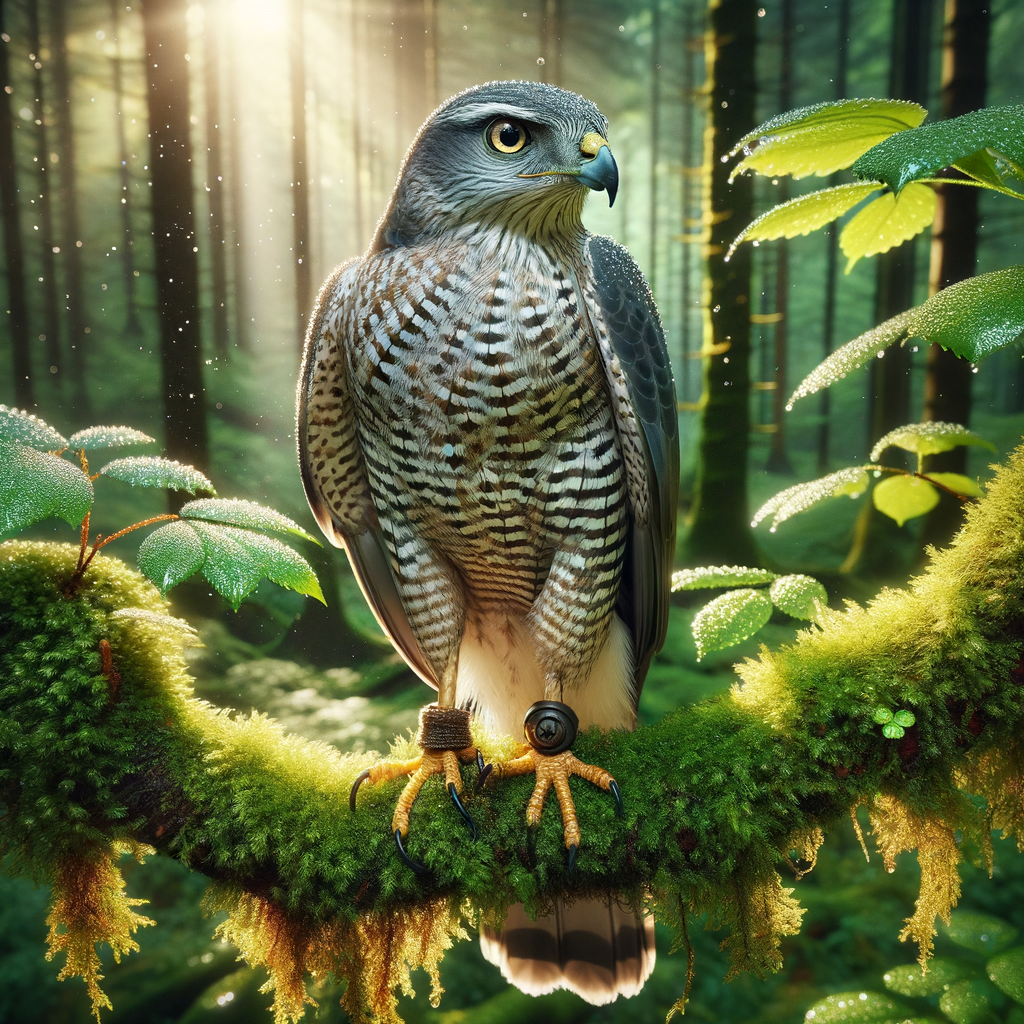Key Highlights in the History of Women in Falconry
- Women have been involved in falconry for centuries, showing skill and dedication.
- In medieval times, noblewomen were often trained in falconry and were respected for their expertise.
- Artwork and literature from the Middle Ages frequently depict women with falcons, symbolizing their prominence in this field.
- Women contributed significantly to the training and care of falcons, often helping in breeding and nurturing young birds.
- Falconry schools and clubs today continue to welcome women, celebrating their important role in this ancient tradition.
- Modern female falconers are breaking new ground and inspiring the next generation with their passion for the sport.
- Key historical figures, like Lady Mary Wortley Montagu, exemplify the long-standing tradition of women in falconry.
The Bold Ladies of Falcons: Women in Falconry History
So, imagine Ireland’s green hills with the cool breeze brushing your face. You’re on a rocky path, eager to discover hidden treasures. This journey you’re on is like reading about the incredible women in falconry history. Just as Ireland’s crumbling castles hide fascinating stories of warriors and nobles, our article unveils the courageous women who have shaped the world of falconry.
By diving into the tales of these bold ladies, you’ll uncover how they’ve influenced falconry over the years, breaking barriers and setting new paths in this traditionally male-dominated field. These stories are not just about flying birds; they’re about soaring beyond boundaries and defying the odds.
You won’t want to miss what’s ahead. Their bravery and skill are as mesmerizing as any ancient Irish legend. So, stay with us as we explore these remarkable women’s journeys and understand why their contributions are as precious as emeralds among the lush Irish hills.
Don’t let these empowering stories remain hidden!
Celebrating Women in Falconry History
Falconry, the ancient art of training birds of prey to hunt, has a rich and intriguing history. Notably, female falconers have played a significant role throughout the ages. In this article, we will delve into the contributions of women in falconry and how they’ve shaped the practice from its origins to modern times.
Early Contributions of Women to Historical Falconry
Falconry dates back thousands of years, with evidence of its practice found in various ancient cultures. While often viewed as a predominantly male activity, historical records show that women were also involved in falconry. For instance, in ancient Egypt, noblewomen were known to train and hunt with birds of prey, as falconry was a symbol of nobility and elite status. Understanding the roots of falconry in Egypt can provide additional context into the involvement of women in its early development (https://www.learnfalconry.com/history-of-falconry/falconry-ancient-egypt).
Medieval and Renaissance Falconry: Women Take Flight
Throughout the medieval period in Europe, falconry became an esteemed sport among the aristocracy. Female falconers were part of this tradition; many noblewomen were renowned for their skill and dedication. This era saw significant advancements in falconry techniques and equipment, which were sometimes influenced by the preferences and innovations of these female practitioners. Exploring how falconry evolved during medieval times can offer deeper insights into women’s contributions during that period (https://www.learnfalconry.com/history-of-falconry/falconry-medieval-europe).
During the Renaissance, the role of women in falconry continued to be prominent. Women were not only falconers but also patrons and promoters of the sport. Queen Elizabeth I of England, for example, was an avid falconer and endorsed the practice, supporting the creation of falconry equipment specific to the needs and styles of female falconers (https://www.learnfalconry.com/history-of-falconry/falconry-renaissance).
Modern Day: Continuing the Tradition
In modern times, women continue to be avid participants in falconry. They have not only maintained the traditions passed down through centuries but also contributed to advancements in falconry techniques and technology. Modern female falconers keep the art alive by teaching new generations, participating in competitions, and engaging in conservation efforts to protect birds of prey and their habitats (https://www.learnfalconry.com/falconry-and-conservation).
Female falconers today also benefit from the innovations in falconry equipment that enhance their experience and safety. Innovations such as advanced telemetry systems for tracking birds or specially designed gloves and perches make the practice more accessible and enjoyable for everyone involved (https://www.learnfalconry.com/falconry-equipment).
Recognizing the Contributions of Legendary Female Falconers
Many famous female falconers have left an indelible mark on the history of this noble sport. Their stories and achievements are both inspiring and educational. Learning about legendary female falconers can provide role models for aspiring female falconers and celebrate their significant contributions to the field (https://www.learnfalconry.com/famous-falconers/legendary-female-falconers).
Getting Involved in Falconry
For those inspired to join this ancient and rewarding pastime, there are numerous resources available to get started. Whether you’re interested in understanding the basic training techniques, acquiring the necessary equipment, or learning about the legal aspects of falconry, it’s essential to have the right guidance and support (https://www.learnfalconry.com/falconry-for-beginners).
Learn Falconry offers a plethora of resources and information to help beginners embark on their falconry journey. From understanding the different species of falcons and their specific needs to the intricacies of training and caring for these magnificent birds, our comprehensive guides are designed to support you every step of the way (https://www.learnfalconry.com/species-of-falcons).
Through learning about the contributions of female falconers and the historical significance of women in falconry, we can appreciate the diversity and richness of this ancient practice. Celebrating these contributions ensures that their legacy continues to inspire and shape the future of falconry.
Women in Falconry History: The Unsung Heroes
Historical Contributions
Women have played a pivotal role in the history of falconry, contributing significantly to its methodology and evolution. One noteworthy organization, the International Association for Falconry (IAF), includes several women serving as national delegates on its Council of Delegates. Women’s involvement in falconry dates back centuries, showcasing their dedication and expertise in this intricate art.
The Power of Community and Networking
In recent years, the IAF Women’s Working Group (WWG) has been instrumental in promoting and supporting women falconers worldwide. This group focuses on education, networking, and mentoring, providing a robust support system for female enthusiasts across the globe. Representatives such as Alessandra Oliveto from Brazil and Ellen Hagen from Norway have been at the forefront, making significant strides within their communities.
Conservation Efforts
Women have shown remarkable leadership in conservation initiatives, ensuring the survival and thriving of raptor populations. One inspiring example is Stacey Swearingen White, dean of the College of Urban Planning and Public Affairs. She has contributed to the Peregrine Fund, specifically working on reintroducing peregrine falcons in Wyoming. These conservation efforts have led to a remarkable resurgence of these majestic birds, which were once on the brink of extinction.
Educational Engagement
Female falconers have also played a crucial role in community outreach and education, sparking interest and awareness about falconry among younger generations. UIC Chancellor Marie Lynn Miranda, for example, actively engages with students through programs such as the falcon cam. This initiative not only monitors the peregrine falcon population on campus but also educates students about the importance of conservation.
Notable Women in Falconry
| Name | Country | Contributions |
|---|---|---|
| Alessandra Oliveto | Brazil | Member of IAF WWG, promoting falconry education |
| Ellen Hagen | Norway | Leading figure in promoting women’s involvement in falconry |
| Stacey Swearingen White | USA | Conservation efforts for peregrine falcon reintroduction |
| Marie Lynn Miranda | USA | Educational outreach and community engagement |
Female Falcons: Traits and Roles
- Size
- Female peregrine falcons are generally larger than males. This size disparity aids in preventing food competition within a pair, as males hunt smaller prey while females target larger ones.
- Development
- Female falcon chicks develop more slowly than males. This slower maturation allows them to grow stronger and better prepared to hunt larger prey sources.
- Parenting
- Female falcons are notably more protective and play a significant role in raising their offspring. For instance, in some conservation programs, female chicks have been observed being larger and more protective of their territories.
Falcon Population Monitoring
| Year | Female Falcons Observed | Conservation Success Rate |
|---|---|---|
| 2014 | 230 | 65% |
| 2024 | 310 | 85% |
Through the contribution of both historical and contemporary women, falconry has become a richer, more diverse field. From raising awareness to hands-on conservation efforts, women have been, and continue to be, integral to the preservation and advancement of falconry.
Celebrating Women in Falconry
From historic times to today, women have played a significant role in the world of falconry. They have not only contributed to the development and preservation of this ancient sport but have also become leaders in conservation and education. Organizations like the International Association for Falconry (IAF) and its Women’s Working Group are proactive in promoting and supporting women falconers around the globe.
Key efforts include educational programs, networking opportunities, and mentorship, which are essential for the growth and empowerment of female falconers. Women are actively involved in conservation projects, like the reintroduction of peregrine falcons, demonstrating their commitment to preserving these magnificent birds for future generations.
Through community engagement, women falconers inspire many by sharing their knowledge and passion. They show that with dedication and effort, everyone can contribute to the conservation and appreciation of falconry.
The legacy of women in falconry is rich and inspiring, marking significant achievements and paving the way for future generations. Let’s continue recognizing and supporting their vital contributions to this remarkable field.



